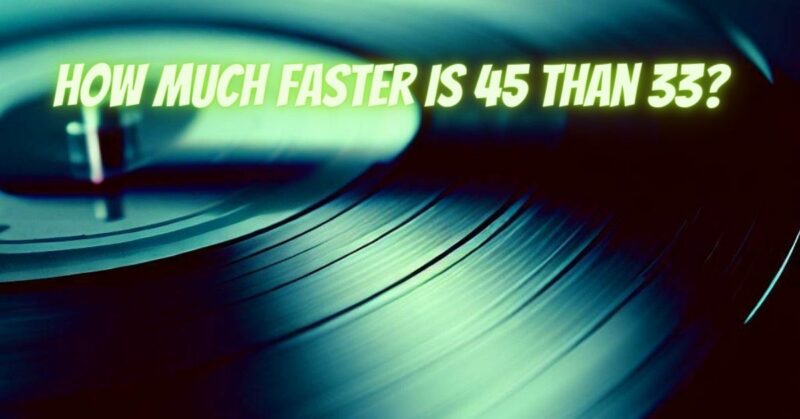In the world of vinyl records, the playback speed is an essential factor that determines how fast the record spins and how the music sounds. The two most common speeds for vinyl records are 45 RPM (Revolutions Per Minute) and 33 1/3 RPM. These speeds represent the number of times the record completes one full revolution in a minute. In this article, we will explore the differences between 45 RPM and 33 1/3 RPM and how they affect the music listening experience.
- Speed Difference
The primary difference between 45 RPM and 33 1/3 RPM is the speed at which the record rotates. At 45 RPM, the record spins faster, completing 45 full revolutions in a minute. On the other hand, at 33 1/3 RPM, the record rotates at a slower pace, completing 33 1/3 full revolutions in a minute. The 45 RPM setting is used for 7-inch vinyl records, while the 33 1/3 RPM setting is used for most full-length 12-inch vinyl records.
- Playing Time
The difference in rotational speed between 45 RPM and 33 1/3 RPM also affects the playing time of the music. Since the 45 RPM setting spins the record faster, it allows for more grooves to pass under the stylus in a given time, resulting in shorter tracks with more grooves per inch. This allows 7-inch vinyl records to hold a relatively smaller amount of music compared to 12-inch vinyl records played at 33 1/3 RPM.
- Sound Quality
The choice of playback speed can also impact the sound quality of the music. Generally, playing a record at 45 RPM provides a higher fidelity audio output compared to 33 1/3 RPM. This is because the faster speed allows for a more detailed and dynamic sound reproduction. However, this is not always the case, as sound quality is also influenced by factors like the mastering process, pressing quality, and the condition of the vinyl record.
- Musical Releases
Both 45 RPM and 33 1/3 RPM have been historically used for different types of musical releases. 45 RPM was commonly used for commercial singles and EPs (Extended Plays) that contained one to three tracks per side. These singles were often popular choices for radio play and jukeboxes. On the other hand, 33 1/3 RPM was the standard speed for full-length albums, allowing for longer playing times and more extensive musical content.
- DJ and Remix Culture
In modern DJ and remix culture, both 45 RPM and 33 1/3 RPM have their significance. DJs often use 45 RPM singles to create energetic and fast-paced mixes due to their shorter tracks and faster tempo. Conversely, some DJs prefer to use 33 1/3 RPM for longer blends and seamless transitions between tracks.
In conclusion, the difference between 45 RPM and 33 1/3 RPM lies in the rotational speed of the vinyl record. 45 RPM spins faster and is commonly used for 7-inch vinyl records containing shorter tracks, while 33 1/3 RPM is the standard speed for 12-inch vinyl records with longer playing times. The choice of speed can impact the playing time and sound quality, making each speed suitable for different musical releases and playing preferences. Whether you’re spinning a classic single at 45 RPM or immersing yourself in an album at 33 1/3 RPM, both speeds offer unique music listening experiences that contribute to the timeless appeal of vinyl records.


